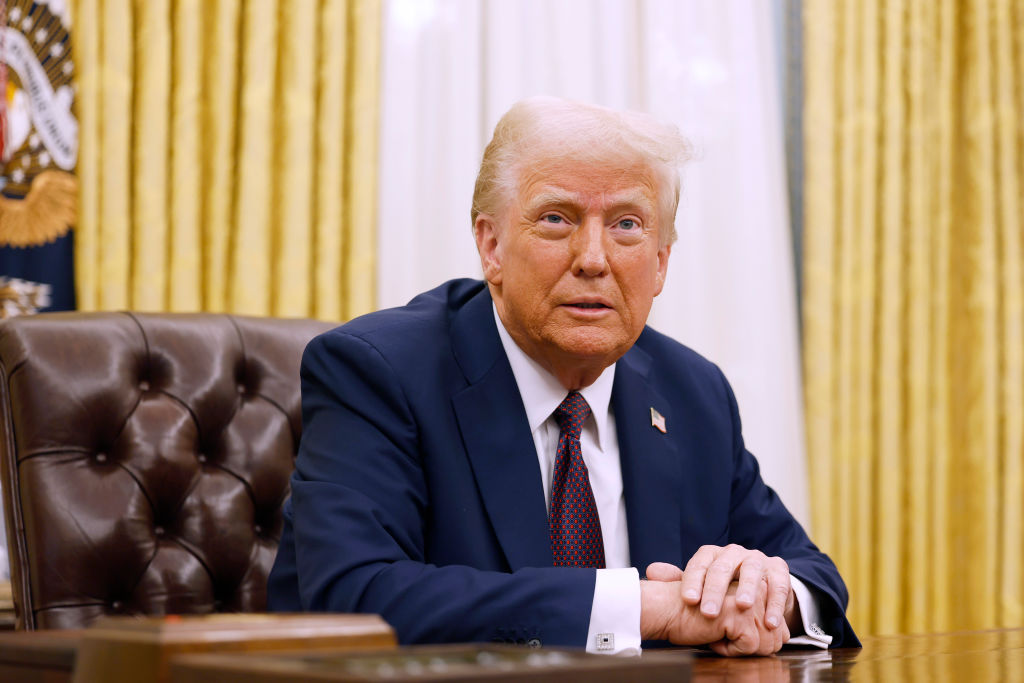New U.S.-China Rivalry: Vying for Asia's Trade
Both governments are now pushing regional free trade agreements designed to expand commerce with Asian countries. But they're very different -- and their impact is beyond trade.
The U.S. and China are extending their strategic competition to yet another arena: The two are promoting rival international agreements designed to expand their trade in Asia and garner a larger share of the region's fast-growing market.
SEE ALSO: China -- Cooling It Until Next Spring?
Washington is stepping up its two-year-old push for a nine-country Trans-Pacific Partnership, intended to pave the way for a broader Pacific Rim-area trade pact. Representatives of participating governments are slated to meet again in San Diego in early July. Washington wants to complete the TPP framework as quickly as possible.

Sign up for Kiplinger’s Free E-Newsletters
Profit and prosper with the best of expert advice on investing, taxes, retirement, personal finance and more - straight to your e-mail.
Profit and prosper with the best of expert advice - straight to your e-mail.
Meanwhile, Beijing has revived a long-dormant plan for a tripartite free trade agreement that would include China, Japan and South Korea. The three Asian governments announced in May that they would soon open talks on the Chinese proposal, offering an alternative to the U.S.-sponsored TPP.
The rival efforts have geopolitical implications. For the U.S., the TPP is a vehicle both for deflecting China's growing influence in Asia and for opening more Asian markets to American farm products and U.S.-based service industries, such as insurance and finance.
For Beijing, its plan is a means to expand Chinese influence in Asia, counter the U.S. TPP plan and distract Asian governments from the threat some perceive in China's military and naval expansion and aggressive foreign policy stance. "This is their best geopolitical blocking maneuver against the U.S.," says Gary Clyde Hufbauer, a trade expert at the Peterson Institute for International Economics in Washington.
The two approaches are very different. The U.S.' TPP would spawn a classic free trade agreement that would slash tariffs, reduce import quotas and open markets -- for agricultural and nonagricultural goods and for services. It also would reduce barriers for investment and pare government subsidies for state-owned companies. China's would omit services and agricultural goods and would not trim investment rules or cut subsidies for state-owned firms.
China's plan is likely to be more attractive to Japan and South Korea, both of which want to avoid paring back state-owned enterprises, cutting barriers on agricultural imports and fostering more foreign investment. Together, China, Japan and South Korea account for almost 20% of global output.
For the moment, both plans face serious hurdles. Japan, for one, is encountering too much political turmoil at home to sign any free trade agreement -- especially one that would anger its still-powerful farm lobby. And South Korea wants to outcompete Japan in Asia, not join a pact that benefits Tokyo as well as Seoul. Japan's refusal to be part of a market opening accord hurts America's efforts to put together the TPP. And though Washington says it would welcome China in the TPP, Beijing is suspicious of U.S. motives.
Moreover, negotiations on the TPP have gone so slowly that despite the Obama administration's intensified push for it, U.S. officials have all but given up hope that the plan will bear fruit before the November elections. (If Obama loses, GOP candidate Mitt Romney is certain to continue the talks.)
The potential benefits of even a limited Asian free trade pact are plain. Although South Korea already has a free trade agreement with the U.S., the TPP includes Australia, Brunei, Chile, Malaysia, New Zealand, Peru, Singapore and Vietnam. If Washington can attract Japan, the rest will fall into place.
China, meanwhile, is already Japan's and South Korea's largest trading partner. Beijing's expanding role as an economic linchpin is giving it inroads into other Asian countries as well. Asian exports to the U.S. and Europe are falling off.
Both Hufbauer and Derek Scissors, international economics specialist at the Heritage Foundation in Washington, say the U.S. should invite China to join the TPP now, to be in on the ground floor. "It's a better strategy than slapping sanctions or tariffs on the Chinese," as Obama has been doing, Scissors says.
Get Kiplinger Today newsletter — free
Profit and prosper with the best of Kiplinger's advice on investing, taxes, retirement, personal finance and much more. Delivered daily. Enter your email in the box and click Sign Me Up.

-
 Which Generation Pays the Most Taxes in the US?
Which Generation Pays the Most Taxes in the US?Tax Burden Polls show that most people feel like taxes are unfair. But which age group bears the brunt of the tax burden in the United States?
By Kelley R. Taylor
-
 How Much Will Car Prices Go Up With Tariffs?
How Much Will Car Prices Go Up With Tariffs?Tariffs could drive car prices up even higher, for new and used cars, as well as for American brands.
By Jim Patterson
-
 The AI Doctor Coming to Read Your Test Results
The AI Doctor Coming to Read Your Test ResultsThe Kiplinger Letter There’s big opportunity for AI tools that analyze CAT scans, MRIs and other medical images. But there are also big challenges that human clinicians and tech companies will have to overcome.
By John Miley
-
 The New Space Age Takes Off
The New Space Age Takes OffThe Kiplinger Letter From fast broadband to SOS texting, space has never been more embedded in peoples’ lives. The future is even more exciting for rockets, satellites and emerging space tech.
By John Miley
-
 Rising AI Demand Stokes Undersea Investments
Rising AI Demand Stokes Undersea InvestmentsThe Kiplinger Letter As demand soars for AI, there’s a need to transport huge amounts of data across oceans. Tech giants have big plans for new submarine cables, including the longest ever.
By John Miley
-
 What DOGE is Doing Now
What DOGE is Doing NowThe Kiplinger Letter As Musk's DOGE pursues its ambitious agenda, uncertainty and legal challenges are mounting — causing frustration for Trump.
By Matthew Housiaux
-
 A Move Away From Free Trade
A Move Away From Free TradeThe Letter President Trump says long-term gain will be worth short-term pain, but the pain could be significant this year.
By David Payne
-
 Trump’s Whirlwind Month of Crypto Moves
Trump’s Whirlwind Month of Crypto MovesThe Kiplinger Letter The Trump administration wants to strengthen U.S. leadership in the cryptocurrency industry by providing regulatory clarity.
By Rodrigo Sermeño
-
 Donald Trump Tests His Limits
Donald Trump Tests His LimitsThe Kiplinger Letter President Encounters Legal Obstacles in Pursuit of Ambitious Agenda.
By Matthew Housiaux
-
 Another Down Year for Agriculture
Another Down Year for AgricultureThe Kiplinger Letter Farmers brace for falling incomes, widening trade deficits
By Matthew Housiaux